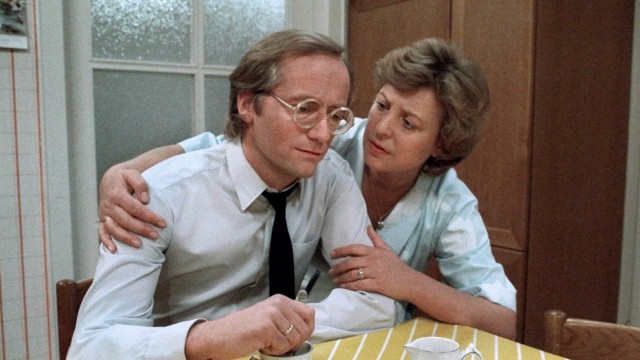Documentary: “Crows”
They’re not cute. A cuddly documentary, such as that of the sweetly waddling emperor penguins, would be impossible with crows. Corvids have a dubious reputation. Martin Schilt talks about this in an animated quick run through mythology and history. At the beginning of his fascinating documentary “Crows” (distributor: DCM), the black birds fly through the centuries in a trick sequence like a woodcut: often feared and hated, but also viewed with respect and fascination, companions of people and gods. Ravens and crows were often considered superior birds. Sometimes they were viewed as wise heralds of omens, but more often as harbingers of bad luck and birds of the dead. They actually deserve their bad reputation. Corvids were always there where there was a lot of death. The omnivores (and that also means scavengers) first followed the wolves and other large hunters, then humans. After all, humans are the most successful predators of all. With him they were in the cemeteries and battlefields, today ravens and crows are at home in cities all over the world.
In these times when many species are being decimated or even dying because humans are robbing them of their livelihood, ravens and crows are among the few species that benefit from our bad habits, such as garbage or urban light pollution room. Martin Schilt spoke primarily with biologists, but also with indigenous people and even with a crow hunter, and learned a lot of exciting things about the birds. How social they are and how curious. The fact that they can “read” their surroundings and also people – an experiment in which a scientist walks across a campus with the scary mask of a “caveman” and the animals react to this “face” is as bizarre as it is impressive, because many years ago a scientist caught animals on campus wearing this exact mask.
For generations, the birds had memorized the culprit’s appearance. Crows play, they use tools – maybe they are intelligent in the “human” sense? In any case, the similarities between humans and birds that “Crows” reveals are fascinating. We can’t be entirely sure about that. The whispering – with the voice of Elke Heidenreich -, the anxious question “will the crow culture one day surpass us?” wouldn’t have needed it at all. It’s enough to see “us” reflected in the behavior of the birds. Martina Knoben
Children’s book: “The Story of Dark”
The children’s book “The Story of Dark” by the Dutch author Marit Kok has been published by Mixtvision Verlag.
(Photo: Mixtvision Verlag)
There are plenty of children’s books about children’s fears. But none of them look like “The Story of Dark” (Mixtvision Verlag) by the Dutch author and animator Marit Kok. For her picture book story about a small, black clay dumpling with eyes – his name is “Dark” and he is afraid of the dark – she built loving sets; the book consists of carefully illuminated photographs of it. Made from real moss, branches as trees and houses made from corrugated cardboard. The dumpling floats through the night with wide, anxious eyes that scare him so much. He discovers their beauty: cozy glowing windows, a glitter in the branches, a crackling campfire (made of felt). It’s so original that you’ll want to start building small landscapes out of sticks and stones yourself. Kathleen Hildebrand
Art: Christoph Tannert’s “Early Critics”

A cultural-historical reconstruction: “Early criticism: radio essays 1994 – 1996”, published by Mitteldeutscher Verlag.
(Photo: 2023 Mitteldeutscher Verlag)
There was actually a station in Potsdam that gave its listeners art reviews in the morning. The station was called Radio Brandenburg, the critic was the curator Christoph Tannert, and it was an excellent idea from Mitteldeutscher Verlag in Halle to now publish a selection of them as transcripts under the title “Early Criticism: Radio Essays 1994 – 1996″. Because Tannert, as a Central German pastor’s son with an almost Martin Lutheran passion for the language, discusses, sings about or insults the exhibition events of the mid-nineties with a passion that has become rare; he sometimes also rumbles on particularly popular things, a bit unfairly, but funny to the core (Christo with his ” Reichstag Jurisdiction”? The “Consul Weyer of Land Art”!). After all, these were the formative years of the Berlin art boom. In this respect, it is also a cultural-historical reconstruction. I would also like to have it as an audio book. Peter Richter
Opera in Copenhagen: Even the Queen likes it

The Royal Opera in Copenhagen on the island of Holmen.
(Photo: Nathalie Lieckfeld/imago images/imagebroker)
What now, Mr General Director of the Royal Danish Theater in Copenhagen? Two titles make the contrast: Do we see “Don Giovanni in Hell” or ourselves “As in Heaven”? One is the Don Juan collage by the Danish avant-gardist Simon Steen-Andersen, co-produced with Strasbourg and soon in the historic opera house; the other is the Swedish musical hit “Som i himlen” by Stefan Nilsson, which ends up in Copenhagen’s futuristic opera palace with the ingenious flat roof close to the river. Denmark’s capital, barely half the size of Munich, is energetically doing innovative things, sorted and subsidized at three venues for opera, ballet, plays and musicals. And follows its political culture, the self-image of monarchy. The opera house over by the water with the royal family’s Amalienborg Palace and the dome of the Marble Cathedral form exactly the visionary line of sight.
And how curious is your audience, Mr. Director? Of course, the music theater in Copenhagen, like all opera houses, has to serve the audience – with “Magic Flute” and “Madama Butterfly”, with “Eugene Onegin”, the “Meistersinger” and “Aida”. Years ago, artistic director Kasper Holten was a busy opera director in London, Brussels, Berlin, Vienna and even Moscow. His “Ring of the Nibelung” marked the beginning of the new Danish opera house in 2006. He knows the expressiveness of the “royal” as a status of the theater, the spiritual increase in importance, because the monarchy is “popular, we have Queen Margrethe, who is very popular. She really comes to us often.” The Crown Prince is closer to sport. Copenhagen has “a relatively equal society with a high quality of life, less filled with tension than elsewhere.” How often does Markus Söder, out of pure inclination, actually visit the music theater in Munich, which is prosaically called the “State Opera”?
“The Match Girl” by the Danish national poet Hans Christian Andersen was the subject of the 1997 opera of the same name by the composer Helmut Lachenmann. Kasper Holten can imagine the prophetic piece in Copenhagen. Maybe it’s on the wish list of his new chief conductor, the French Marie Jacquot. Wolfgang Schreiber
Streaming: “Lindenstrasse” in the ARD media library

The cult series “Lindenstrasse” is back – in the ARD media library.
(Photo: photo report/dpa)
It’s unbelievable how long three years can seem. The last episode aired in March 2020 Lindenstrasse, this legendary series from the rotary dial telephone era. Now she is back, on ARD Plus. All episodes from more than 30 years can be streamed there for the first time. That means listening to the unmistakable title and cliffhanger melody 1,758 times and immersing yourself in the world of Mother Beimer, who was very small in her fictional Munich street, but never whole or apolitical. In the Lindenstrasse There was the first gay kiss on German television (1990), scolding of CSU politicians (Peter Gauweiler!, 1988) and a flash mob call against climate change (2012). Inventor Hans W. Geißendörfer has, like him farewell to SZ Magazine said, “heart in the left place”. Maybe that was it Lindenstrasse not so yesterday. Carolin Gasteiger

